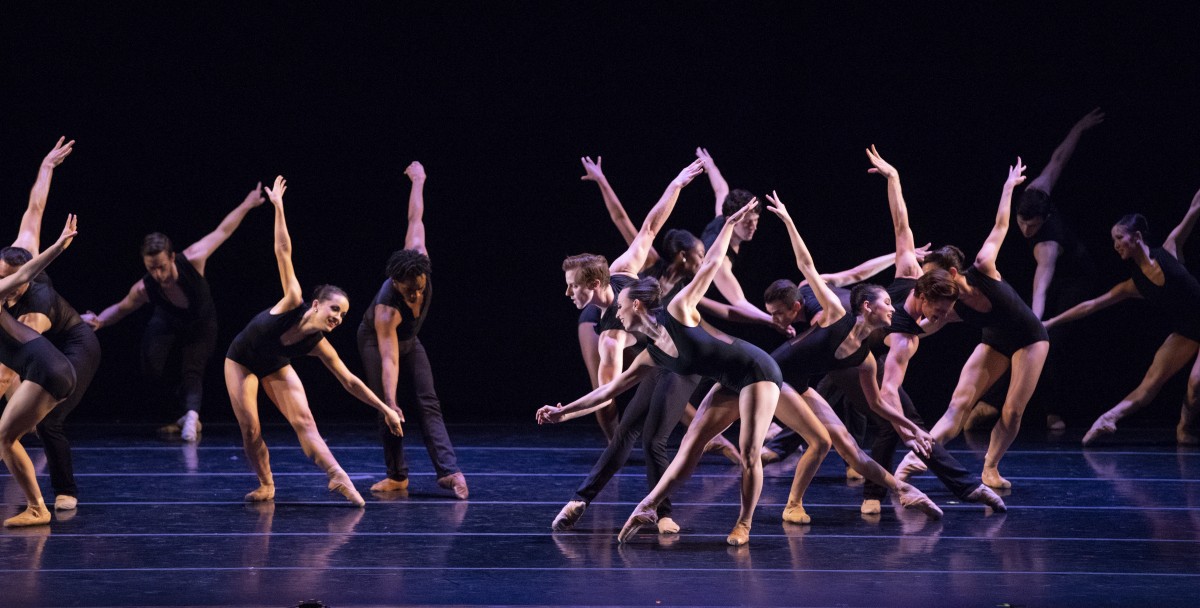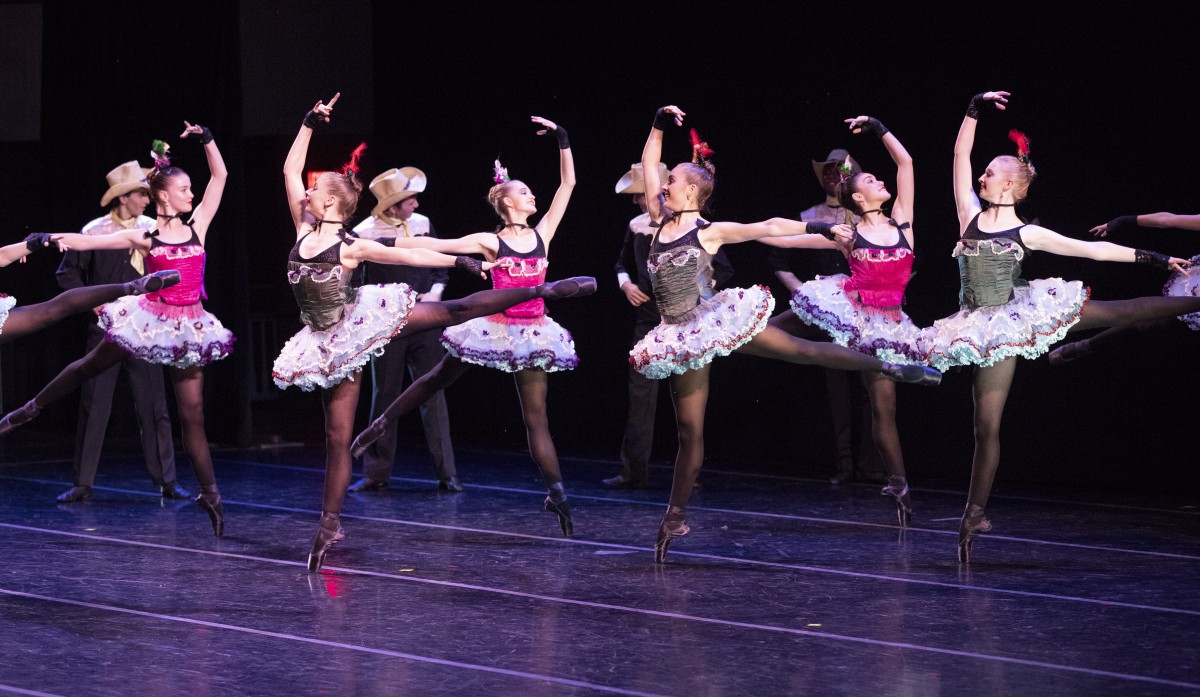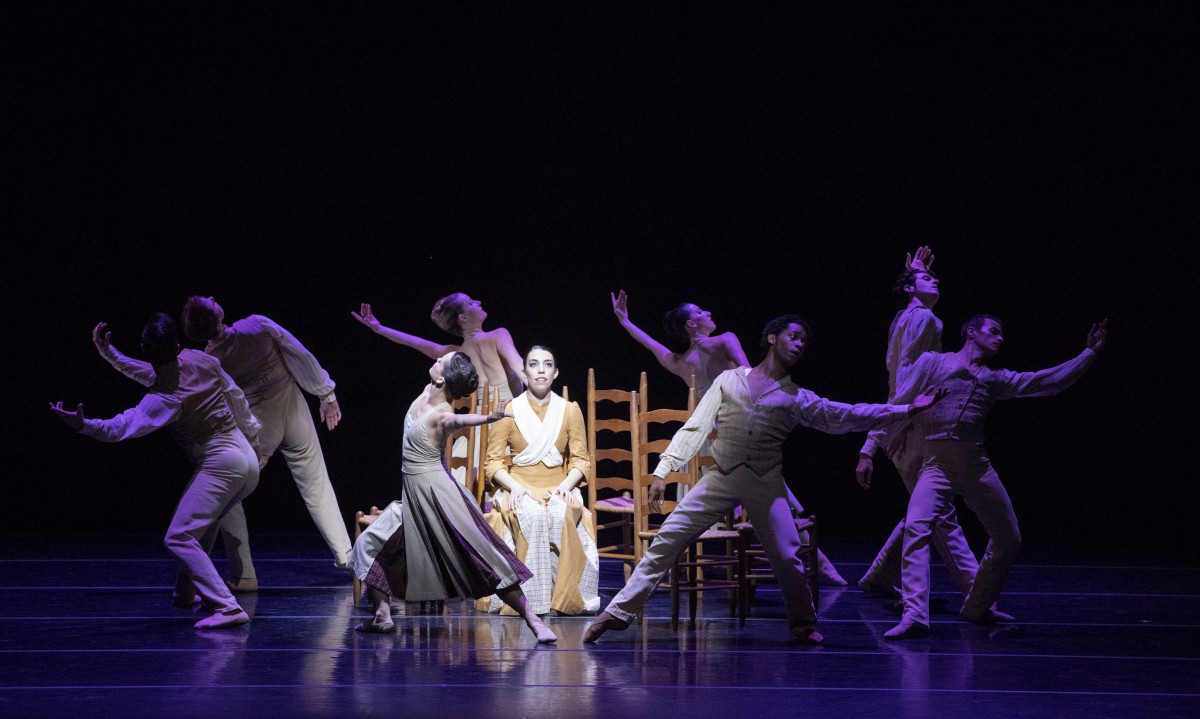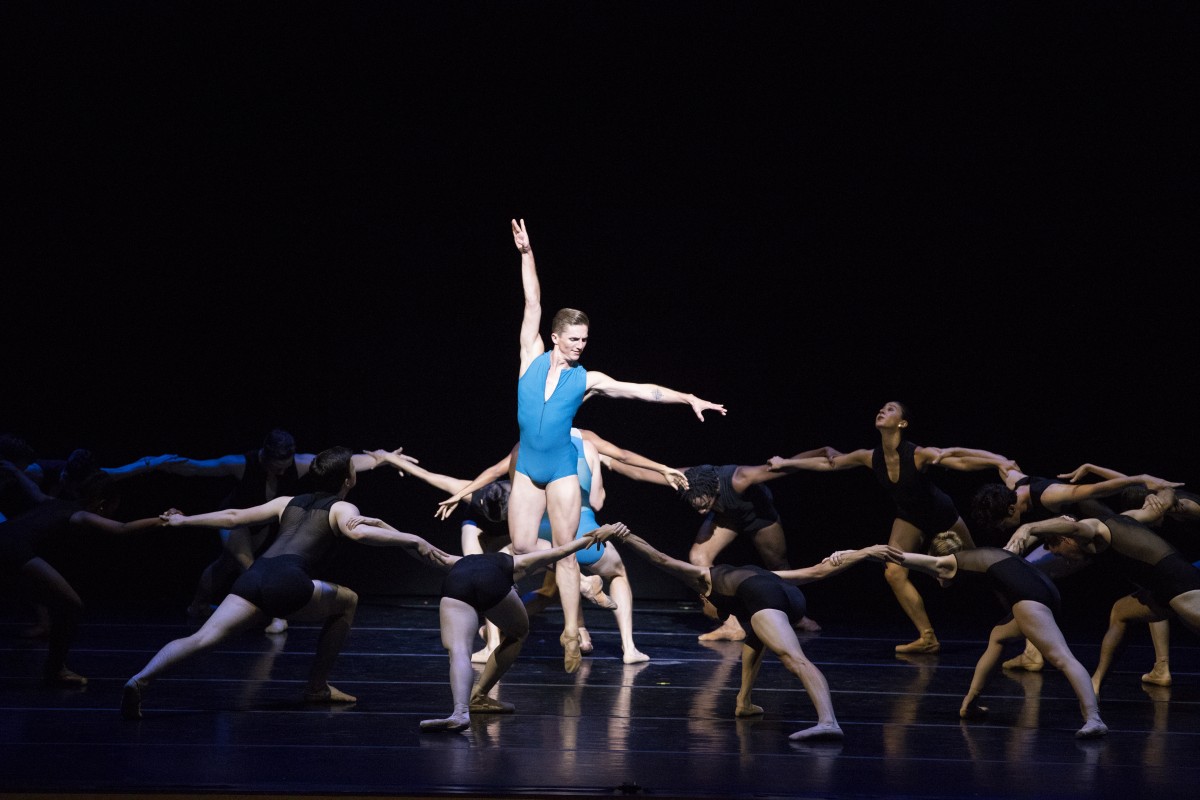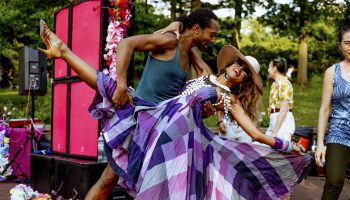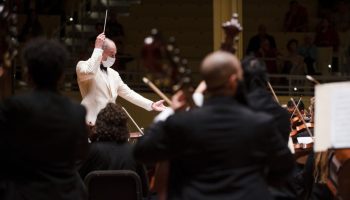For its debut at the Amphitheater Saturday night, the Nashville Ballet teamed up with the Chautauqua Symphony Orchestra for an evening of ballet set to orchestral works from Mozart, Aaron Copland, Hershy Kay and relative newcomer to classical composition, multiplatinum selling singer-songwriter Ben Folds.
Co-commissioned by Nashville Ballet, the Nashville Symphony and the Minnesota Orchestra, Folds’ 25-minute Concerto for Piano and Orchestra in three movements was performed crisply and with feeling by pianist Joel Ayau and the CSO under the baton of Grant Cooper. The music was a vibrant partner to Nashville Ballet Artistic Director Paul Vasterling’s expansive and stylized neo-classical choreography for the aptly titled ballet, “The Ben Folds Project: Concerto.”
Premiered in 2014 and reprised at the Kennedy Center in 2017, “Concerto” was the largest of the four works on the program with 21 dancers. It began with Ayau and his grand piano on stage and the CSO in the Amphitheater’s pit as eight male/female couples costumed all in black swept over the stage. With the feel of classic Broadway or Hollywood production number, the delectable wave of dancing appeared inspired by Fold’s zestful music.
Coming to the forefront in the first portion of the ballet was first-year company dancer Owen Thorne, who played leading man to a string of female partners in short pas de deux. With each pas de deux, Vasterling beautifully framed the soloist couple with various groupings of corps dancers in their shadow. The effect was as grand as Ayau’s piano. In one sequence, the corps dancers, inching their way across the stage behind the lead couple, formed a chain of overlapping arms that shifted along the chain as they moved.
The ballet and the score’s second movement shifted gears visually and sonically as dancer Kayla Rowser, costumed in a white leotard, took over the spotlight from Thorne and became the center of attraction for two male dancers in teal, who lifted her in the air, twisting and turning her about. Also framed nicely by various configurations of corps dancers, Rowser was the picture of grace and beauty, exerting a quiet command in her dancing. Her performance left you wanting much more, and it was a pity this was the only ballet we were to see her in.
The ballet’s final section took another musical tact, and the dancing followed it brilliantly. Folds, who said of his creation, “The notion of a piano concerto written by a rock musician in this century is so completely out of step that I had to do it,” did a not-so-surprisingly bang-up job with the distinctive concerto, and the ballet proved a highly entertaining opener.
Next, came a 10-minute excerpt from George Balanchine’s slice of Americana, “Western Symphony” (1954). Evoking a theatrical view of the old West, complete with cowboys and saloon dance hall girls, the ballet had the flavor of dance associated with that era infused into a classical framework. The excerpt, taken from the ballet’s opening “Allegro” section, featured upper level student dancers from Chautauqua School of Dance in the ballet’s corps roles.
The Americana theme continued in Vasterling’s “Appalachian Spring” (2017) that followed. Set to the suite version of Aaron Copland’s Pulitzer Prize-winning composition made famous by choreographer Martha Graham in her 1944 ballet of the same name, Vasterling created a heartfelt and beautifully crafted work that was distinctive, yet paid homage to Graham’s original.
Employing a mix of neo-classical ballet infused with movements associated with the Graham work, the 25-minute ballet was danced fabulously by nine of Nashville’s dancers, led by 10-year company member Katie Vasilopoulos. It began with her dancing a hopeful solo full of spins and leaps to the quiet opening section of the score that conjured up the feel of a new day dawning around her. While Vasilopoulos was dancing, five men and three women costumed in mid-19th century American prairie-inspired costumes and carrying Shaker-style chairs began to move like a wagon train, circling around her.
In Vasterling’s program notes on the ballet, he describes his inspiration for the ballet coming from a friend who observed “the irony that a work of art that is considered so quintessential Americana was created by a woman (Martha Graham), a gay Jewish man (Aaron Copland) and a Japanese designer (Isamu Noguchi)” — three people that may have been considered (and may in some way still be) considered “the other” in American society.
Vasterling used that notion of “the other” that was reflected in the personality traits of the characters in the ballet, with Vasilopoulos as a sort of motherly figure to them and representing the larger ideals of freedom, hopefulness and acceptance associated with America. Her performance in the role was emotional and captivating throughout.
Each in the cast was featured in small, meaty solos and duets revealing individuals that were exuberant in their hopes, sometimes awkward in their differences and, in the case of two men, longing in their desires for one another.
In the end, the ballet proved a worthy reinterpretation of Copland’s music, delivering a message of unbounded optimism for the future that remains uniquely American.
For the program’s final work, Americana gave way to European farce in the form of Czech choreographer Jiří Kylián’s modern masterwork “Sechs Tänze” (Six Dances). Premiered in 1986 (coincidently the same year Nashville Ballet was founded) and set to Mozart’s Six German Dances, K. 571, the ballet was representative of the Rococo period of Mozart in its costumes and mannerisms, albeit taken outlandishly over-the-top.
Powdered wigs for the four shirtless men, towering teased hair for the four women and white face clown makeup for all added to the spectacle of this zany and risqué work that played out at times like an old episode of “The Benny Hill Show.” Slapstick humor, priceless facial expressions and several brilliantly unusual methods for the dancers to move about the stage, such as bouncing along in a prone position, sent the audience into laughter.
Of particular note was the performance of dancer Mollie Sansone, whose plucky and sometimes spitfire personality in the work saw her deliciously being pursued by two men, only to have them abandon her to don gown-like rolling black dress forms (the same forms that would famously reappear in Kylián’s 1991 masterpiece “Petit Mort”) and her shooting them an “I’m not having that” face.
“Sechs Tänze” ’s comedic thrill ride came to its climax with the dancers shaking out clouds of wig powder, and while a shower of soap bubbles rained down on them from above as they feigned humility, the audience rose to give them a well-deserved standing ovation.
Fabulously, Nashville Ballet and the CSO’s program was everything it was cracked up to be and more.
Based in Painesville, Ohio, Steve Sucato is a contributing writer, critic and reporter. His work has appeared in such publications as The Plain Dealer, The Buffalo News, Pittsburgh City Paper and Dance Magazine, among others.

